Thursday (3 October) and the winds had eased so we headed ashore to walk through the village. It is beautifully kept with manicured gardens, palm trees, and traditional housing with gorgeous views out to sea. Sadly no villagers appeared to be home, although we did meet their pigs and chickens.


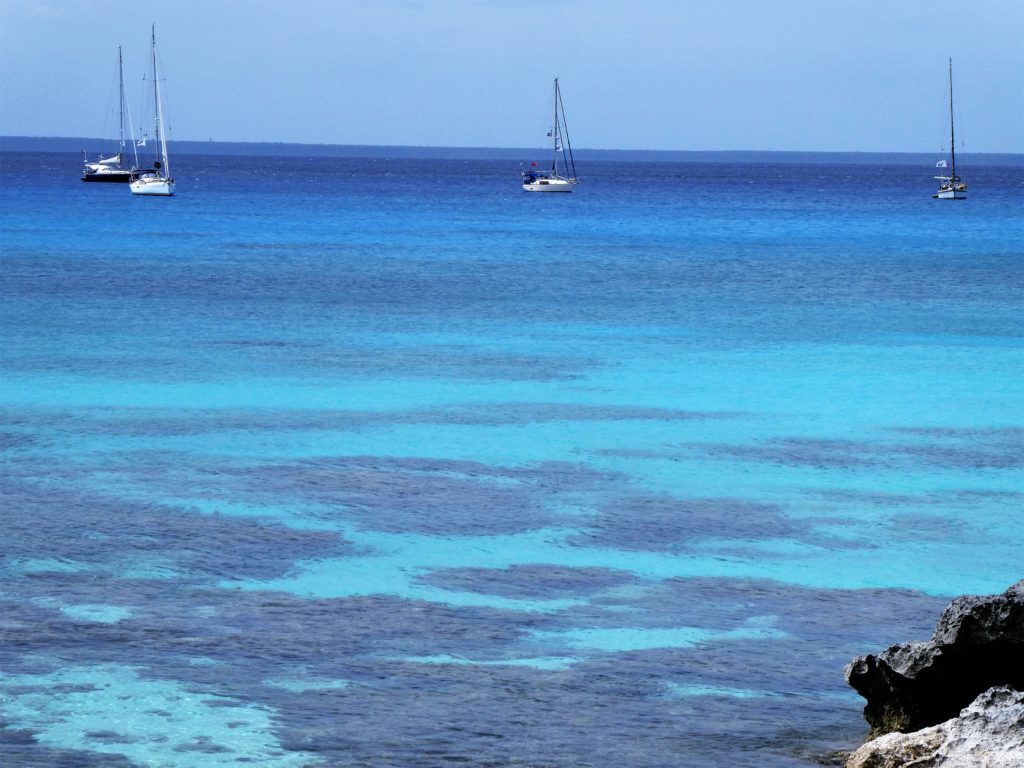
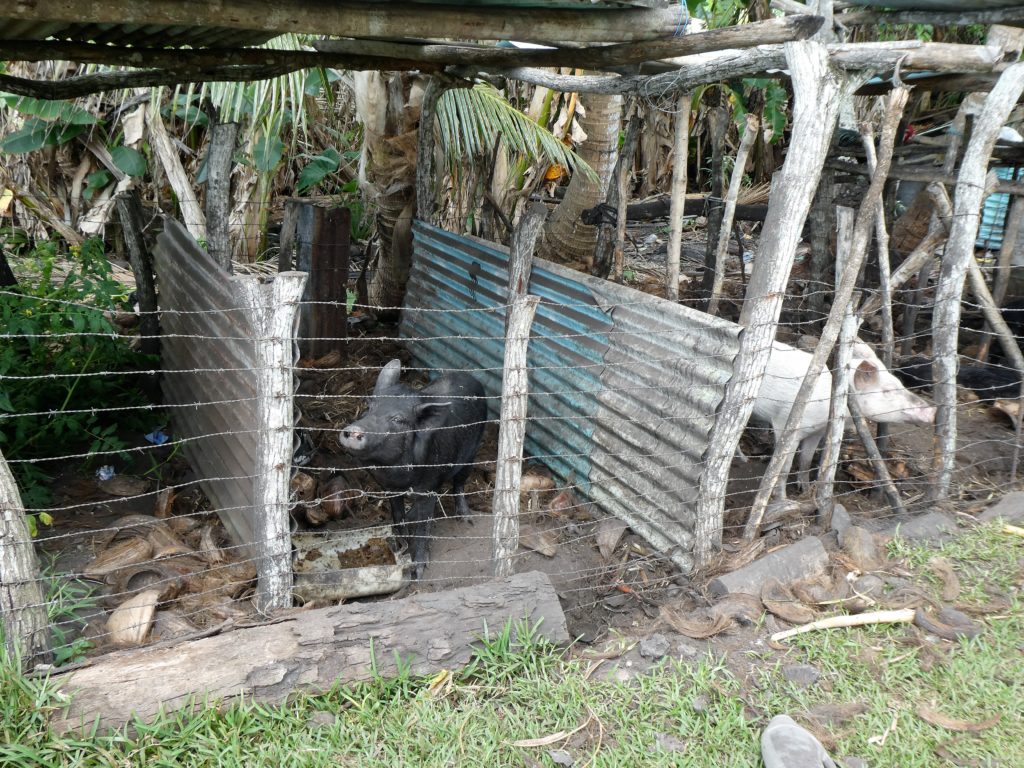
Continuing to wander the village we came across the the wood-fired bakery and treated ourselves to some of the tastiest crustiest bread we had ever eaten. Yum.

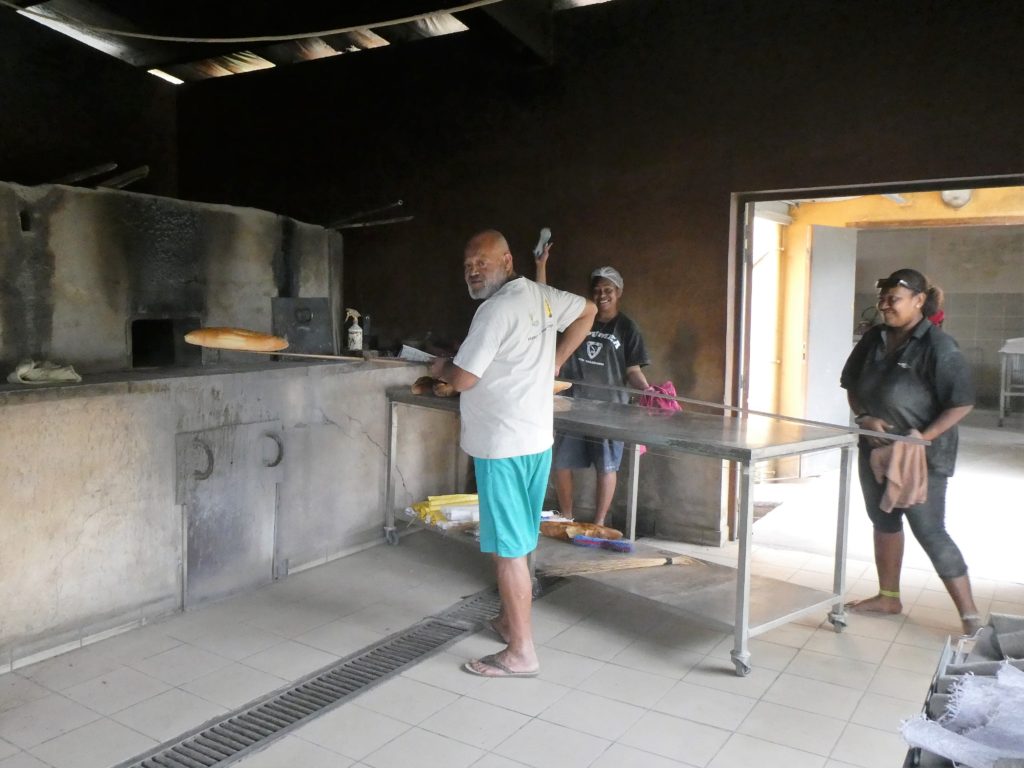
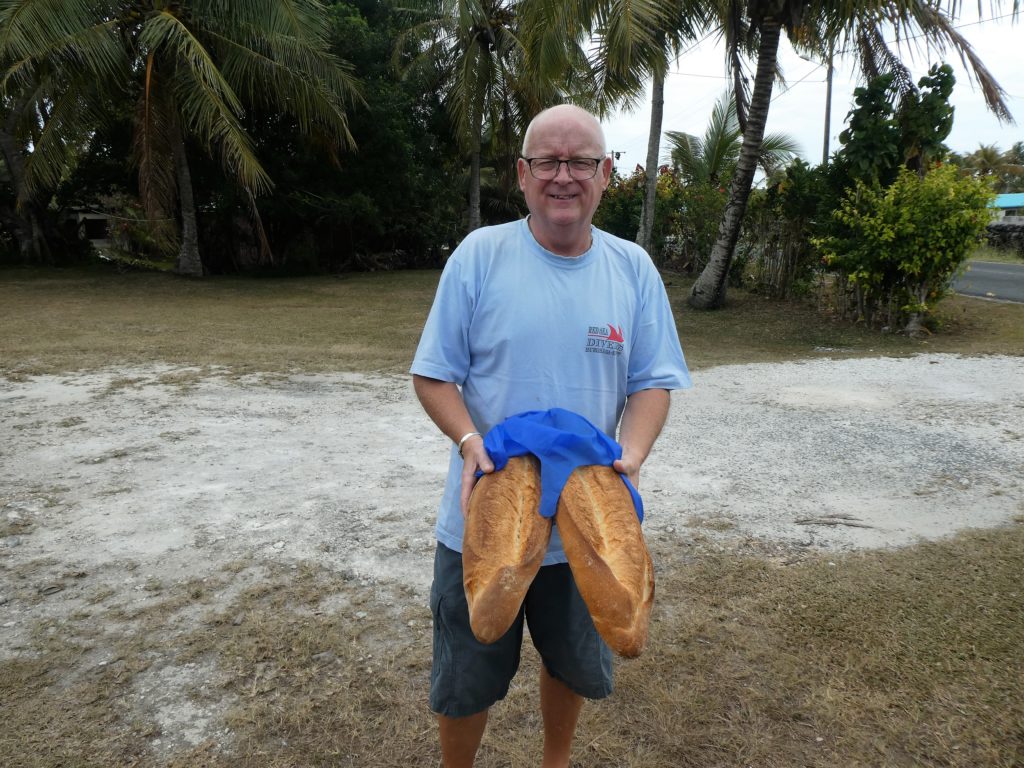
We also found the church school which was incredibly quiet with all the curtains drawn so we think we must have hit upon siesta time. Heading back to Morphie we had a quiet afternoon and evening getting ourselves ready to go to sea again.
At 5.40 am on Friday morning we picked up anchor and sailed out of the bay. The sail to Ouvea was downwind and we ran under a full genoa only. The seas were lumpy and it was a bit of a sporty ride with gusts up to 27 knots. We reached the anchorage outside the Paradis d’Ouvea hotel by 14.10. Another 50 mile passage successfully completed.
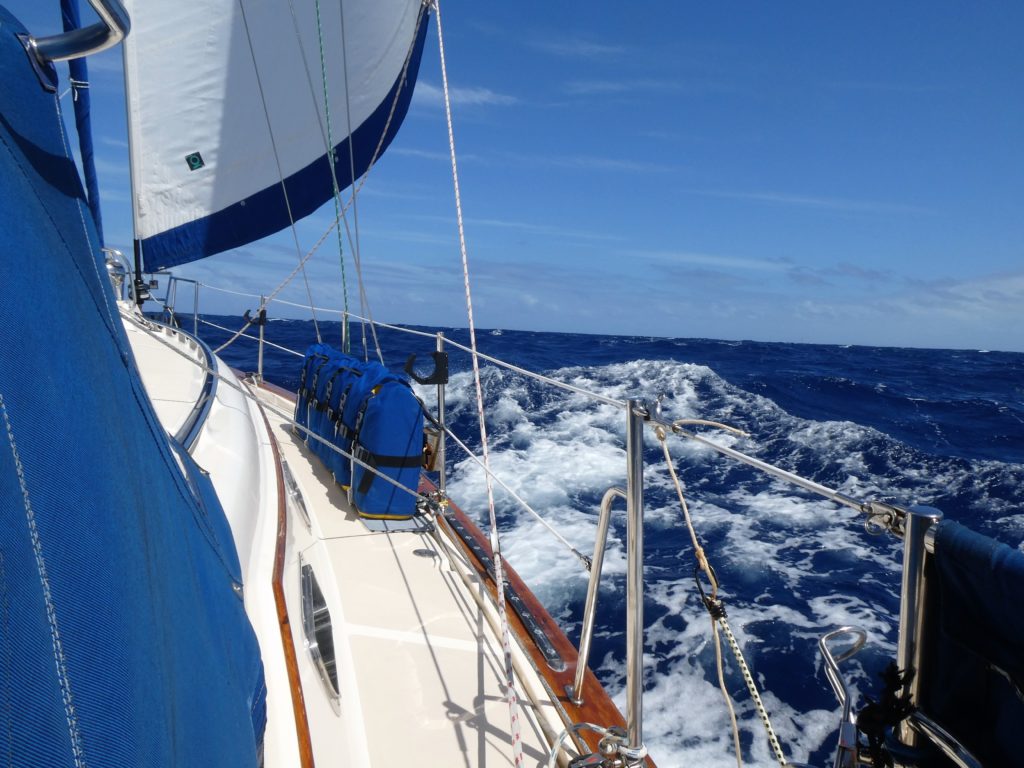
The pure white sand of the anchorage was amazing – it grabbed our anchor so hard – I thought I was going to be ejected over the bow when we came to a sudden stop. So no worries on the anchor not being set LOL. We got dink down and headed ashore and left him on the absolutely stunning beach.

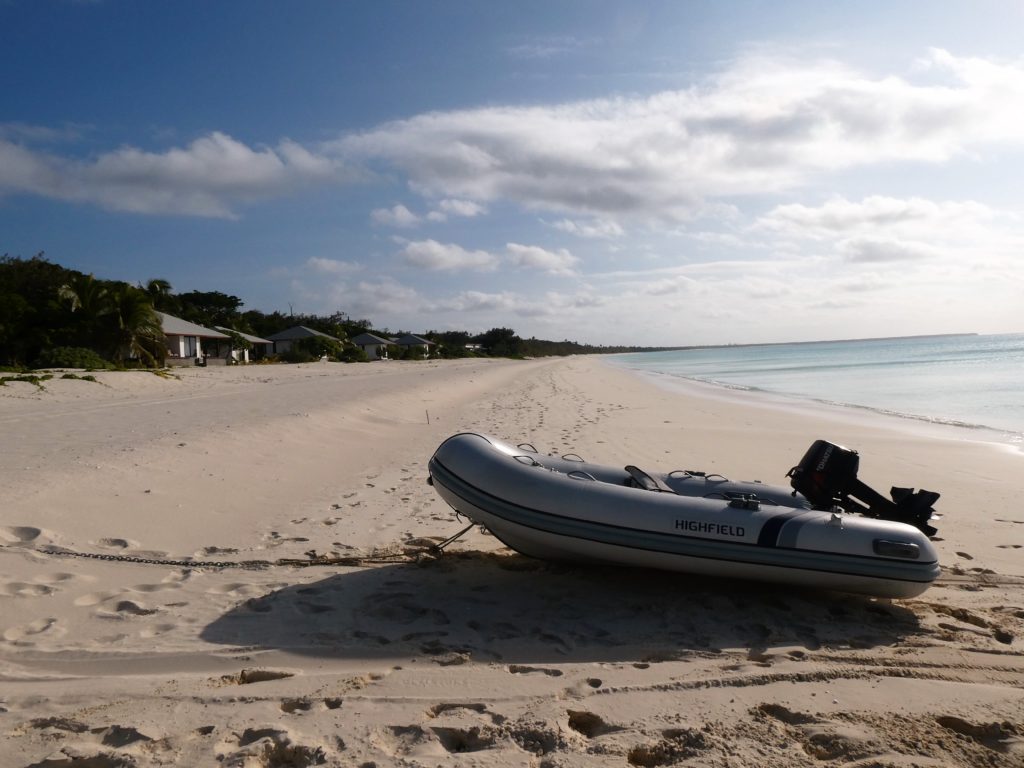
We asked permission at the hotel to leave dink on their beach and they were very friendly and welcoming. So we sat on the hotel verandah and had a couple of (blisteringly) expensive local beers watching the antics of a huge spider that had strung his web across between two trees. We then returned to Morphie before dark.

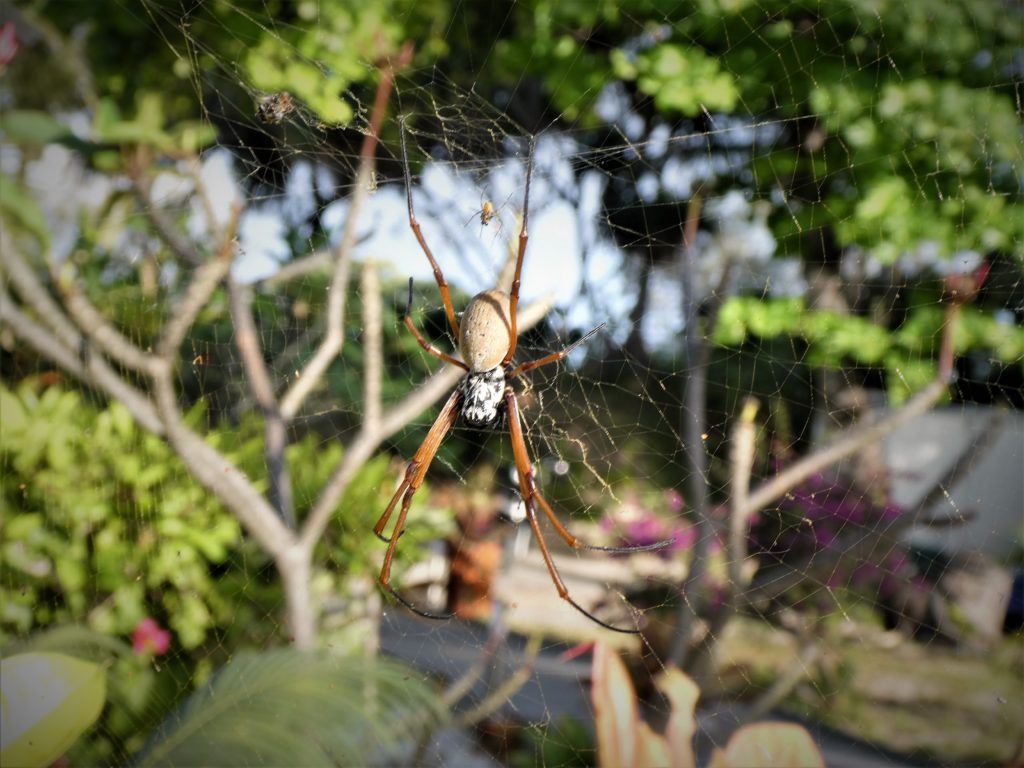
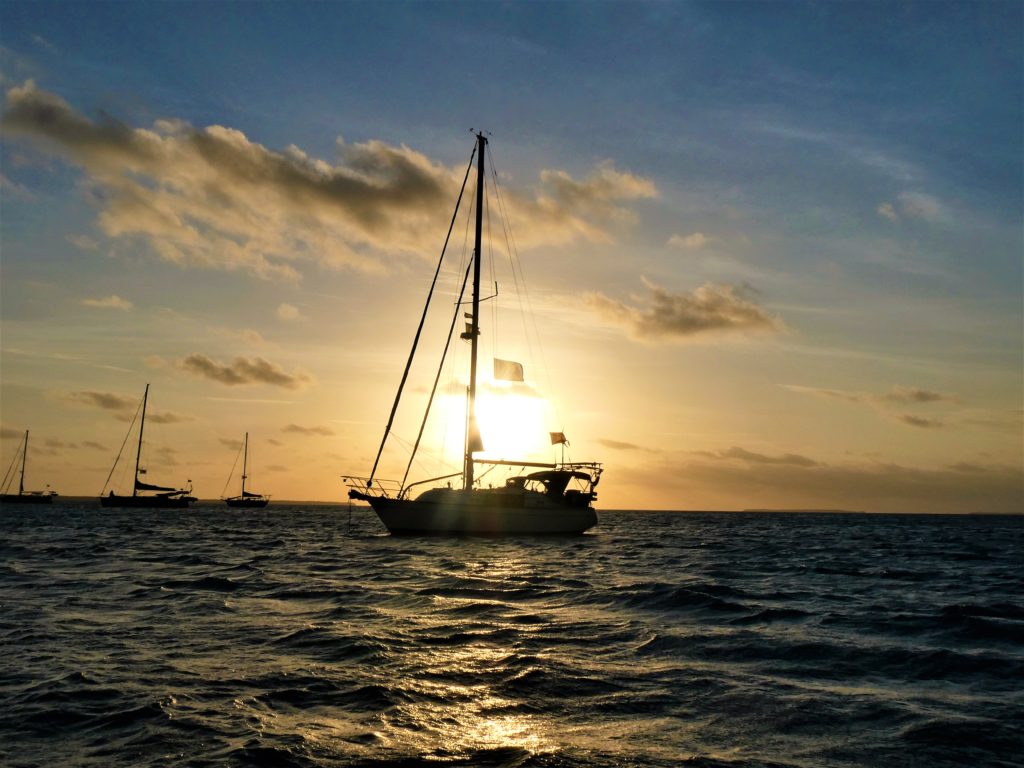
Saturday morning we were up early and headed ashore to meet other Rally participants as we had arranged a tour. We picked up John and Stella (SV Exocet Strike) on the way as we wanted to minimise our dinghy footprint on the resort’s beach – we pulled them all out of the way and chained them together for security.
We met Pierre and Michel, our tour guide and drivers. They had two vehicles so John, Stella, Richard and I headed off with Michel in his little car….which was filthy dirty and held together by rust LOL. The others headed off with Pierre. At first we didn’t think that Michel spoke much English but he soon warmed up and had a wicked sense of humour so we had a great time talking to him.
The island of Ouvea has a tragic history. It is one of the Loyalty Islands (like Lifou) which is largely populated by Kanak tribespeople. They live traditional simple lives and wish for independence from France. However, they are in the minority, with very few islands they can call their own. But they welcomed us to find out more about them and, as both Pierre and Michel were Kanak, we were allowed to visit certain significant tribal and spiritual areas that would otherwise not be allowed.
First stop was the beach at Mouli (in the south of the island) and gave us sight of the channel markers into the lagoon that we had come through the previous day.


Moving on we then stopped at the Mouli bridge which has special significance with the inner lagoon being sacred ground. We walked across the bridge admiring the beautiful scenery and even spotting some turtles and rays in the fast-moving waters below. We had bought snorkelling gear with us (and this was supposed to be an exceptional area) but we all decided not to go in as the current was ripping through and the winds were particularly cold. (And yes if I look a bit windswept that is because I was LOL!)
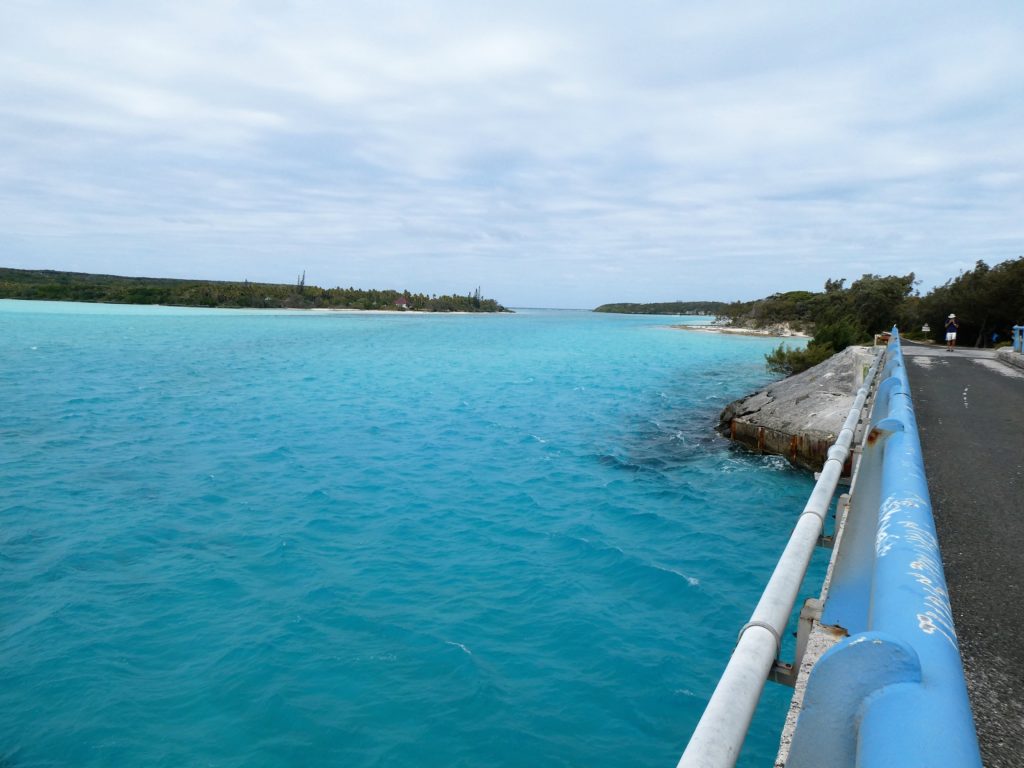

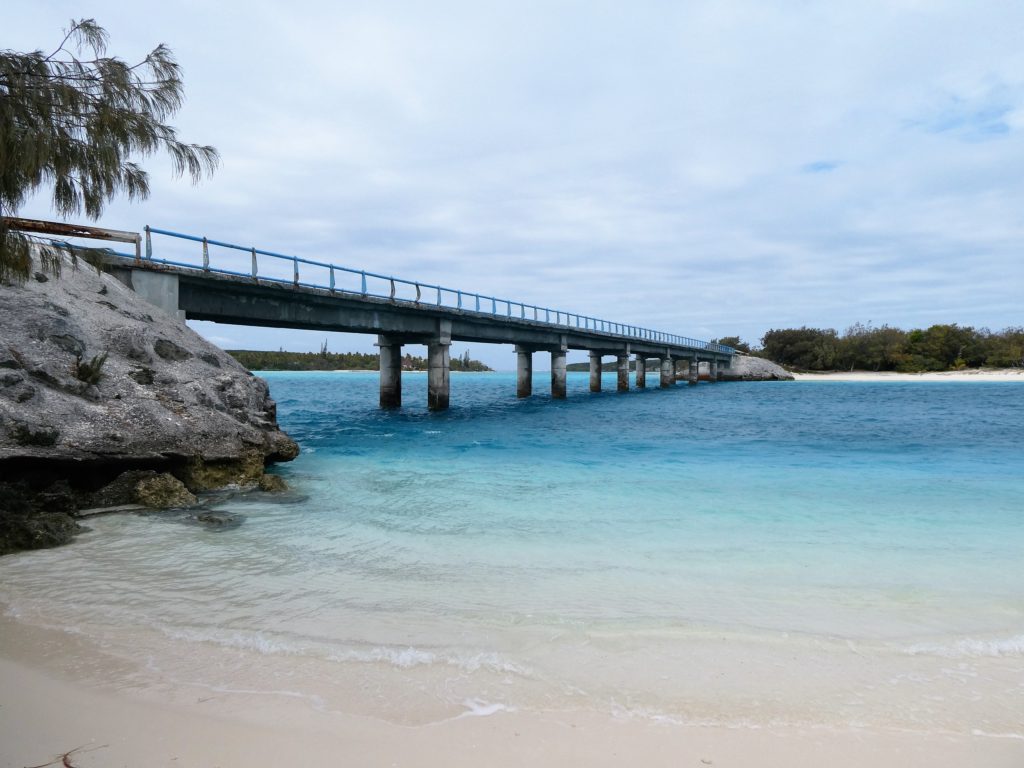
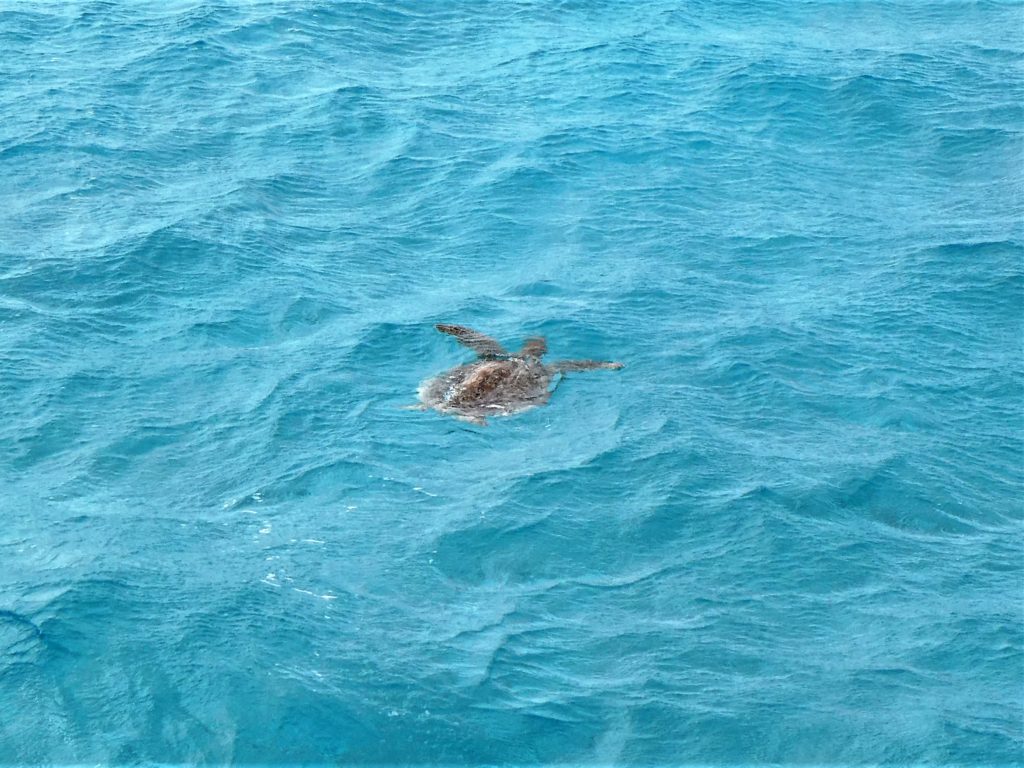
Moving on we headed past the razor-wire fenced gendarmerie towards another village, Fayaoue. The south and the north of the island are largely Catholic with the middle section being Protestant but they all get along as they share a common culture. Each village has its own chief so there is at least one traditional house surrounded by a wooden stockade to symbolise his status. On this island alone there are numerous languages with the villages in the South using a dialect which is similar to that used by islanders from Wallis and Fortuna.

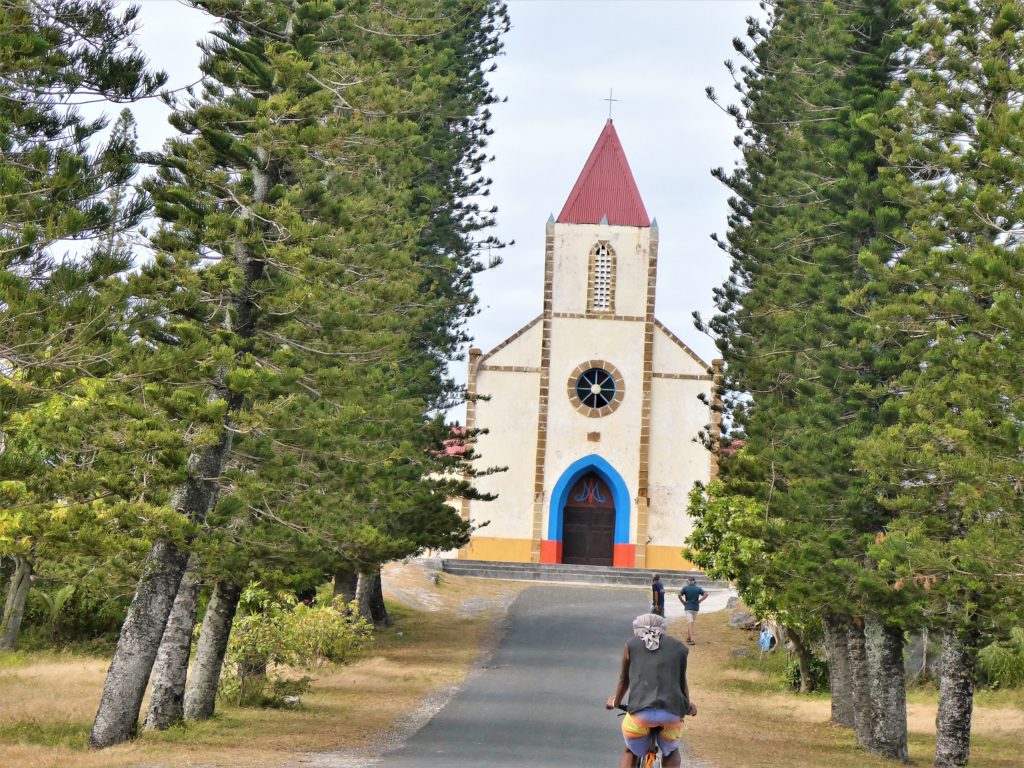
Moving on we came across the memorial to those who had perished in both world wars plus other conflicts and tragedies (eg a ferry sinking with huge loss of life and a soldier that perished recently in Afghanistan). It was beautifully maintained and guarded by two large statues. This was clearly an important place for locals, evidenced by fresh flowers having been recently laid.
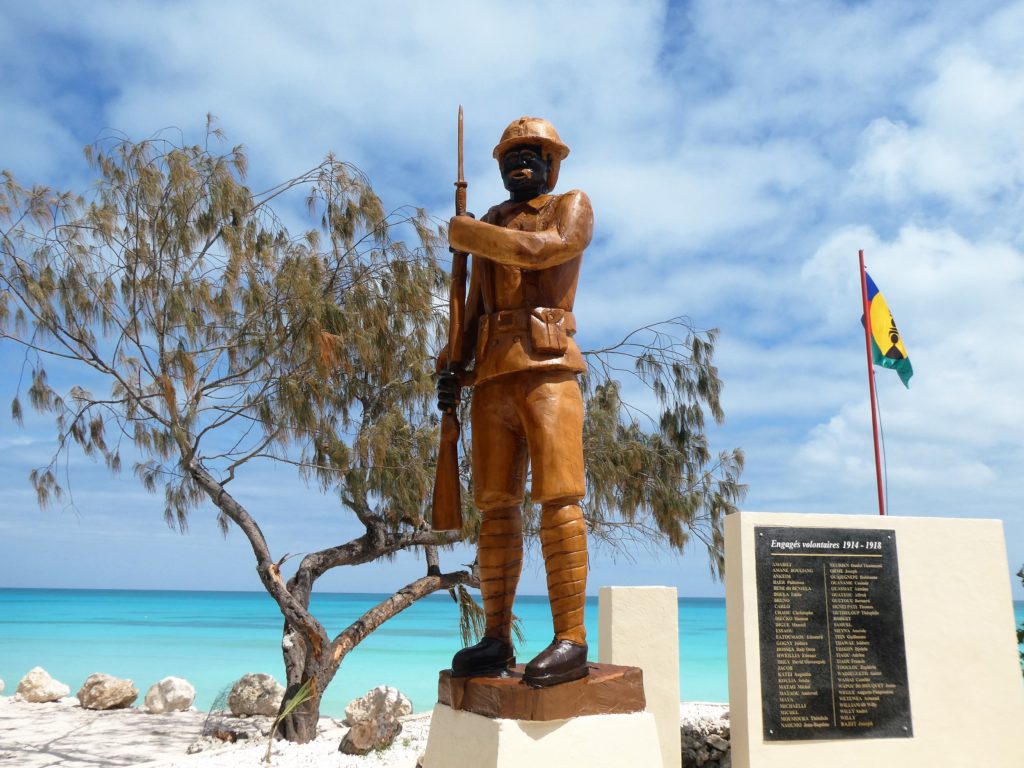

Next stop was The Blue Hole of Hanawa which is so deep that even a Cousteau technical diving expedition was unable to find its true depth. It is definitely linked to the sea as the limestone walls showed signs of the changing tide and housed lots of tropical fish who thoroughly enjoyed the bread we gave them.
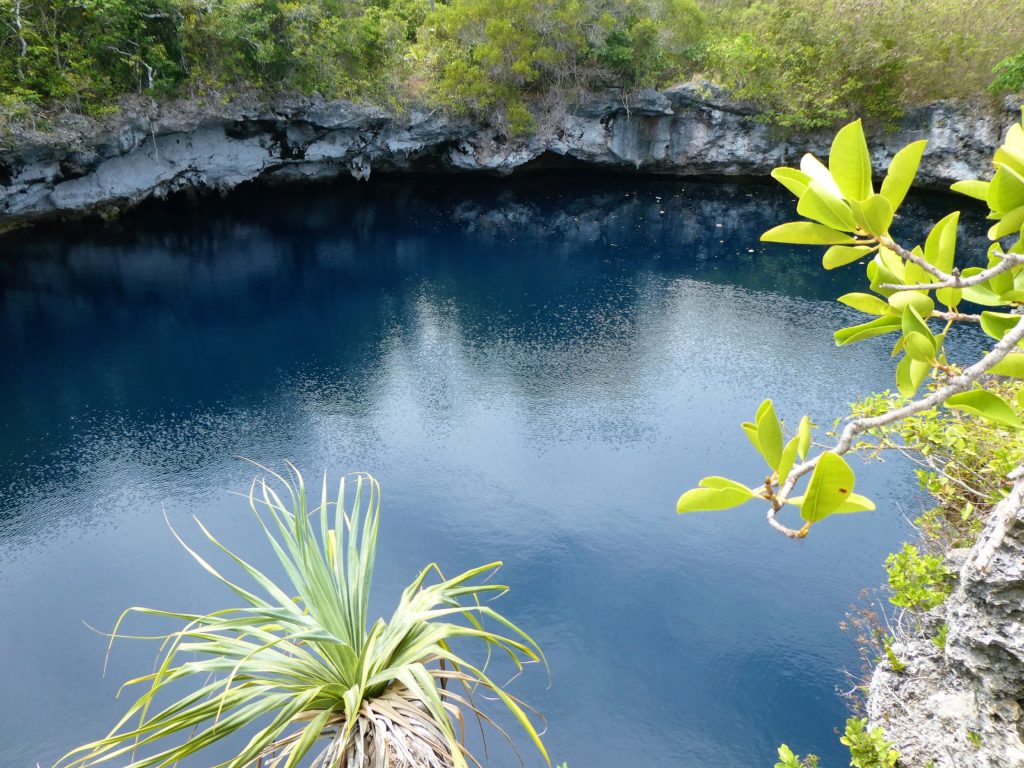
Taking a brief break from the tour we headed to the ATM for more drinking vouchers plus a small supermarket where we treated ourselves to ice cream. Moving on we checked out the huge desalination plants that service the island and also a coconut oil distillery and soap factory, although none of them were operational as it was Le Weekend.
The next place was another memorial. This one is particularly significant for the islanders. In 1988 the locals wanted to fly their traditional flag above the gendarmerie. There was a fracas and four policemen were killed. The Kanak activists then took (French) people hostage and split them into two groups – the group that were held in the village were later released unharmed – and the others were taken to the limestone caves. The hostage-taking was allegedly designed to kick start a dialogue with the French government about the perceived poor treatment of the indigenous population. However, France never negotiate with “terrorists” and sent in special forces to free the hostages. All activists were killed in the process. And to add fuel to the fire many were found to have been executed (or refused medical care) according to an independent medical examiner. So this memorial to these young men is a place for the Kanak people to celebrate the lives and ideals of these martyrs. To show solidarity with other indigenous populations in the region the wooden carvings that commemorate each of them were carved elsewhere representing the Melanesians, the Aborigines, the Maoris and the Polynesians who are all determined to maintain their own culture and regain ownership of their lands. Never truer the saying that one man’s terrorist is another man’s freedom fighter.
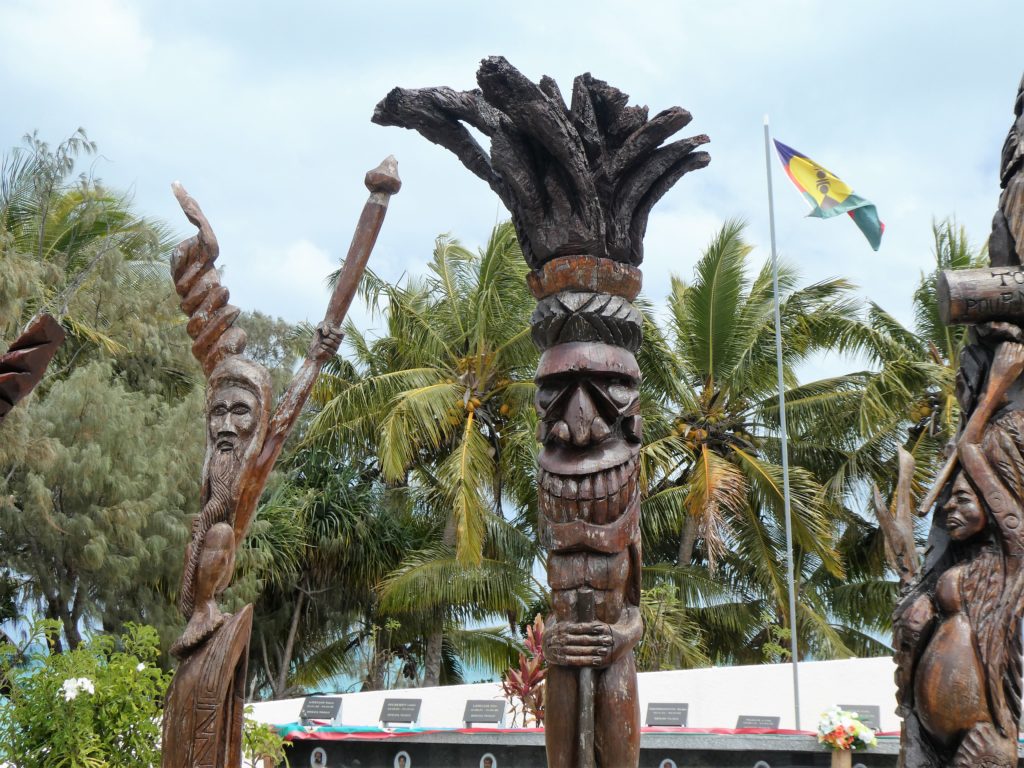
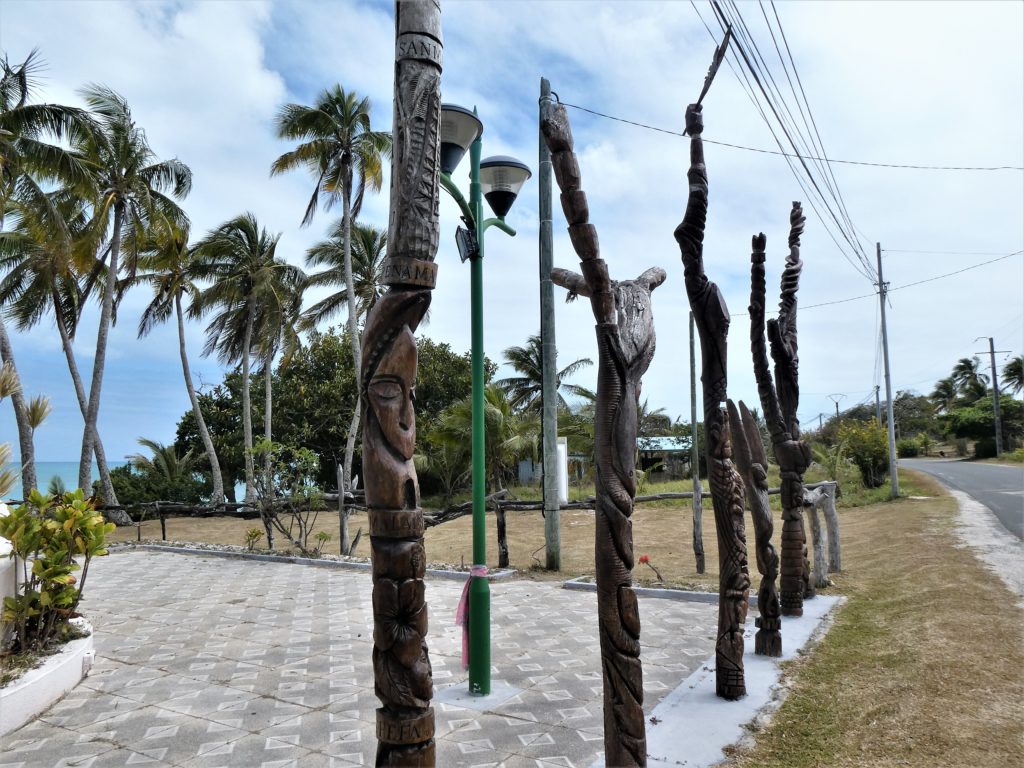
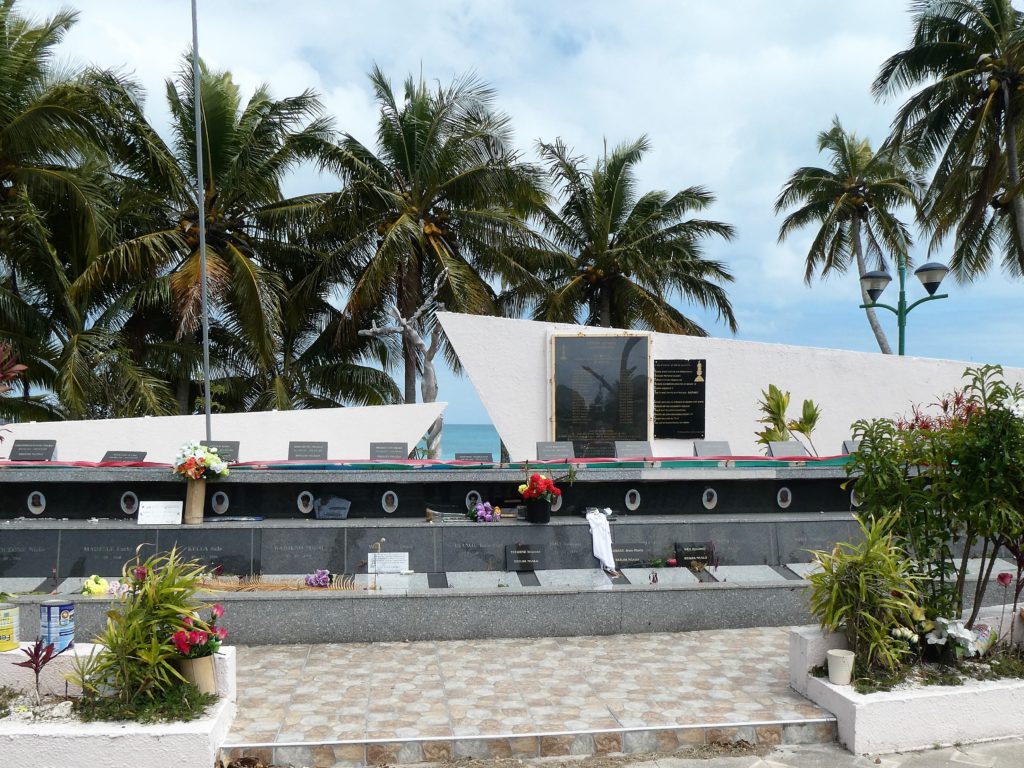
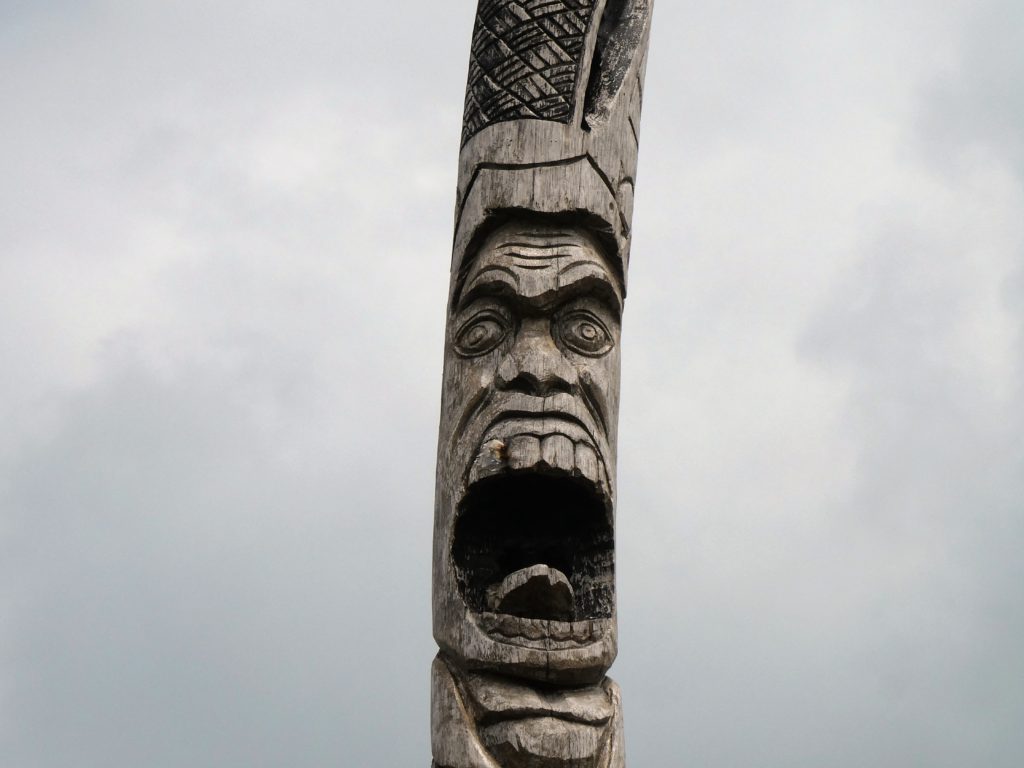
Moving on we headed further north and wandered down to the foreshore to be met by this stunning limestone gorge which was absolutely beautiful.
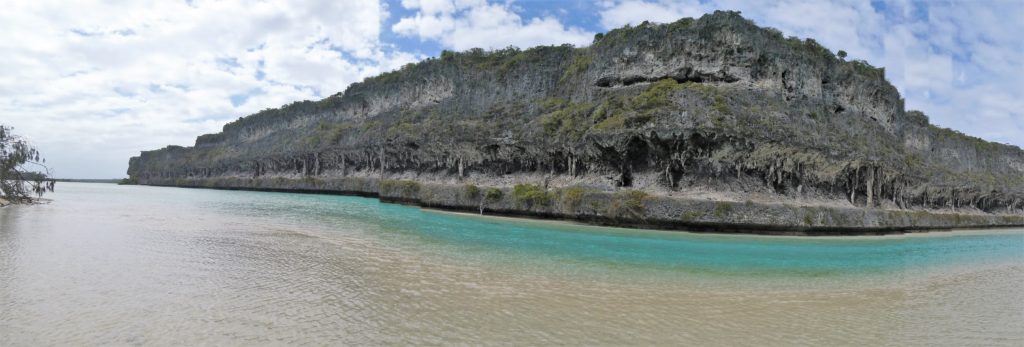
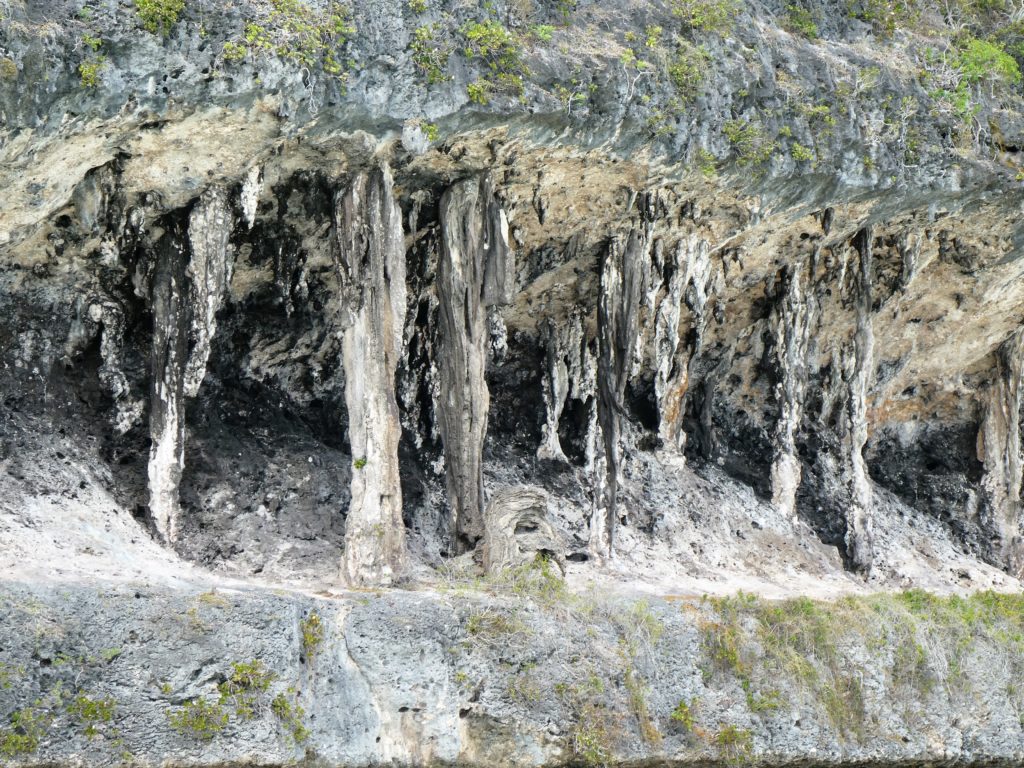
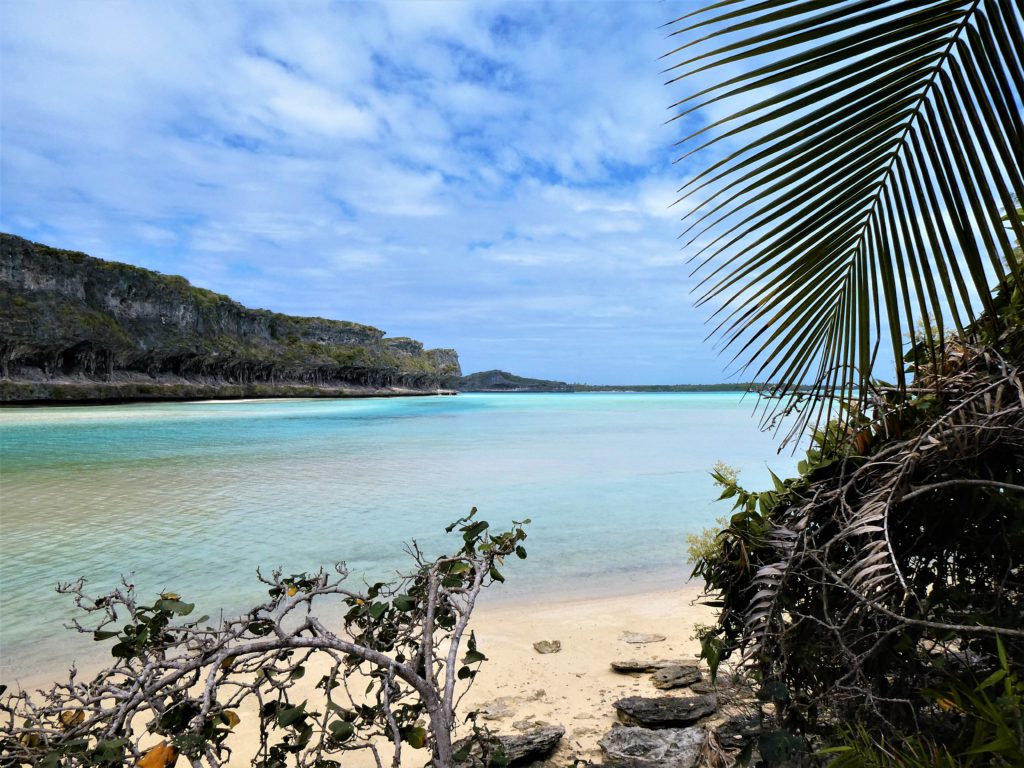
Next stop was the Turtle Blue Hole where we saw some turtles swimming freely. Another sacred place although we did bump into an interesting character who wanted to charge us for taking photographs but was quickly undermined by Pierre who stated that it was not necessary.

Having seen many beaches, villages and other sites it was now time to go for lunch. Beautiful place but also a potentially tough life particularly on the windward side of the island. Check out these fisherman in the surf.

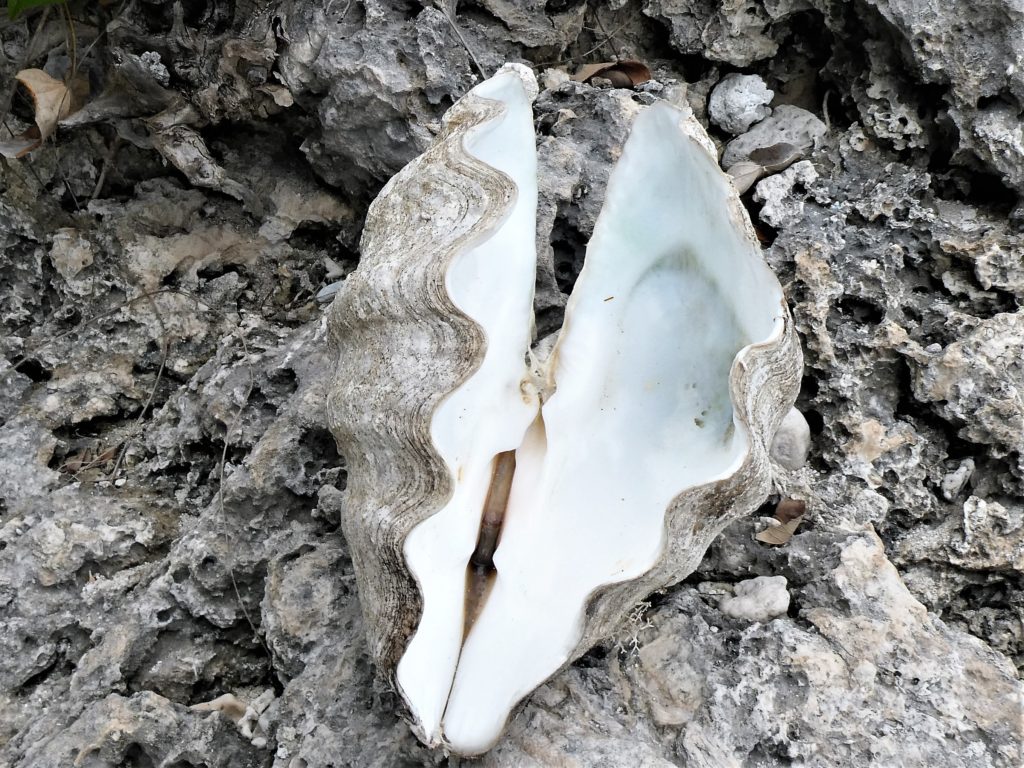

We went to Michel’s compound and met his mum and other family members who had cooked a huge buffet for us and some other (medical volunteer) tourists.
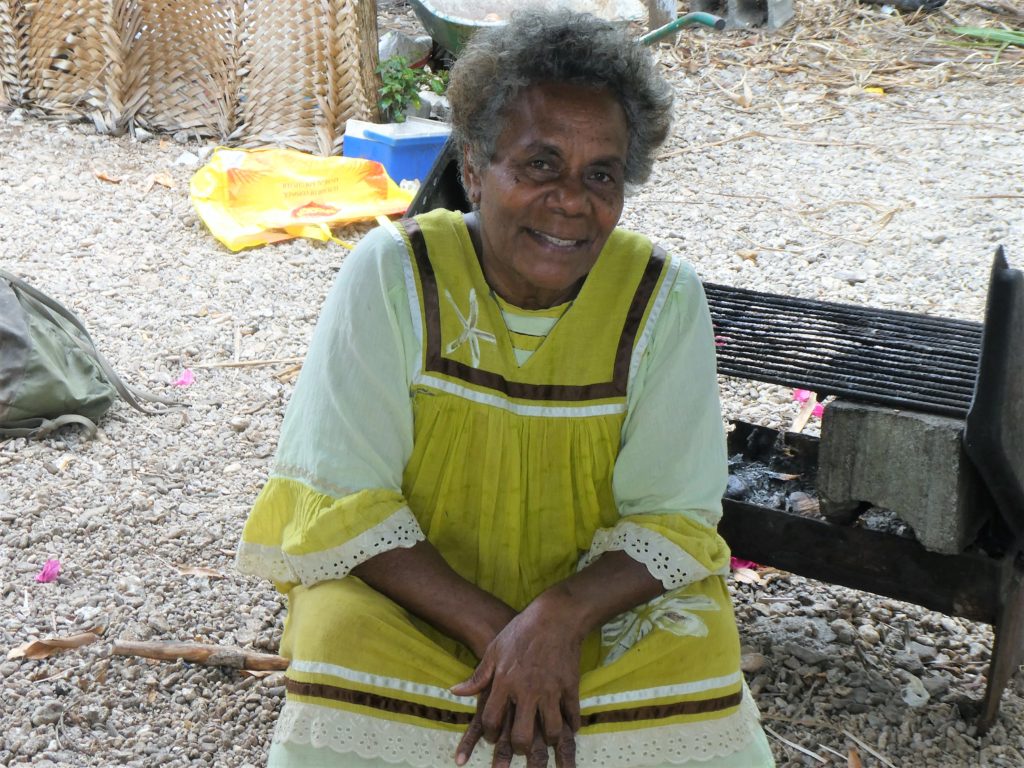
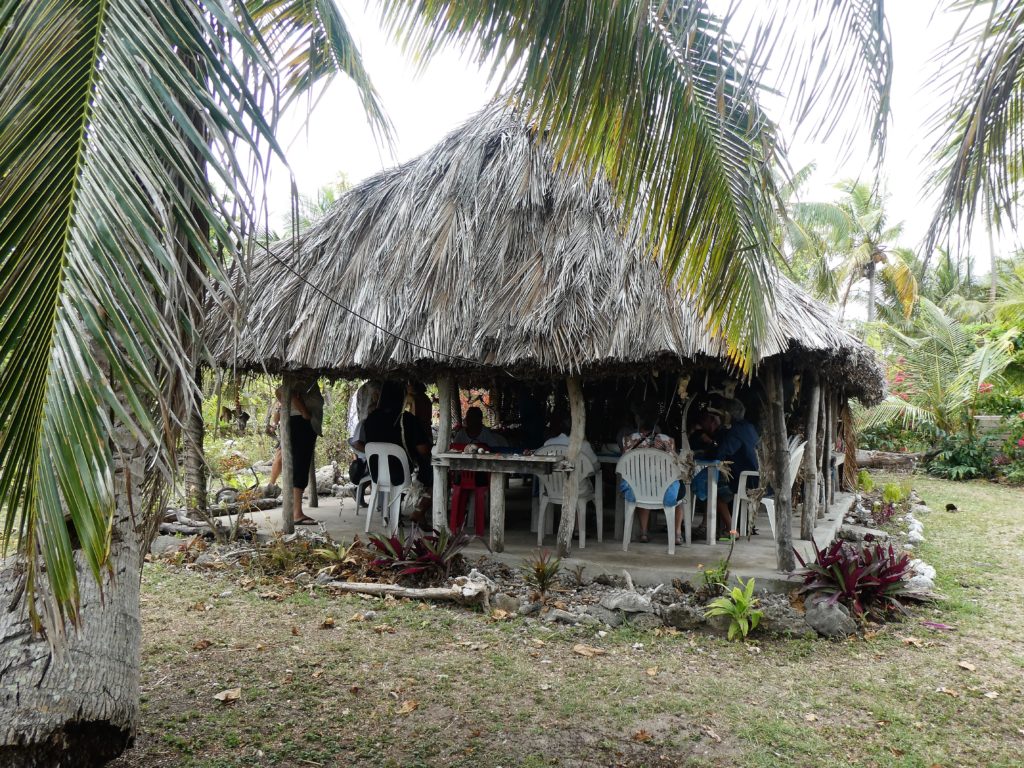
The spread was huge and included land crab, coconut crab (which is an endangered species in Vanuatu) and some large fish. Richard thoroughly enjoyed most things although I was a bit more challenged by the menu. I really didn’t care for the cremated puffer fish as they are one of my favourite swimming friends LOL.
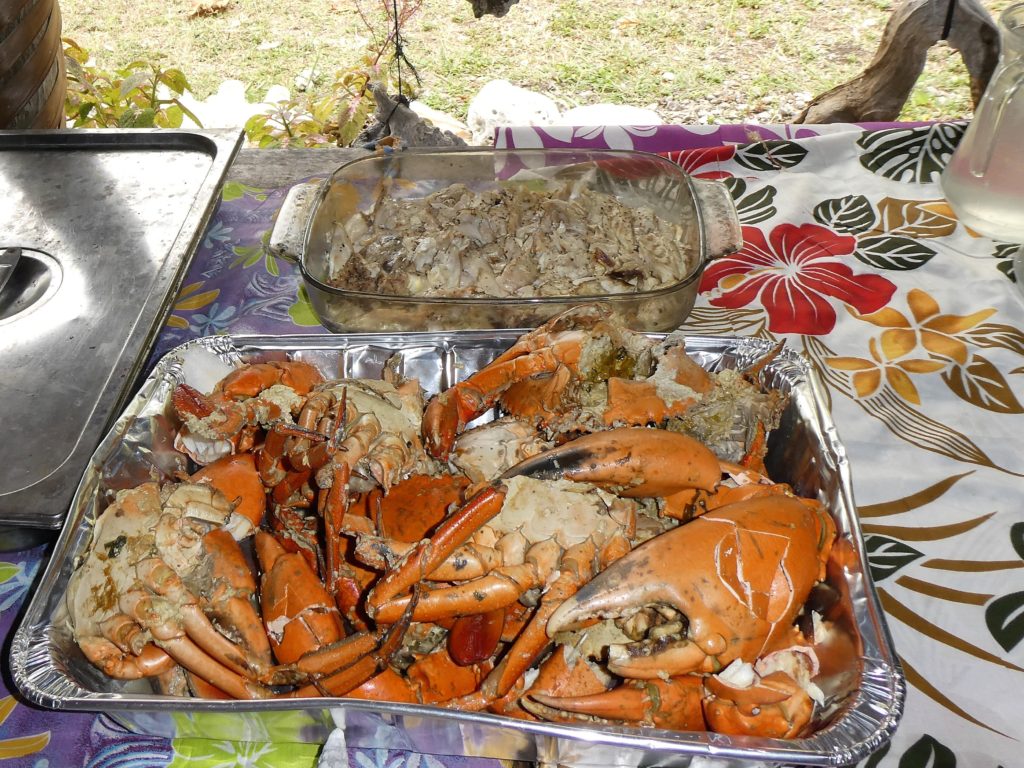
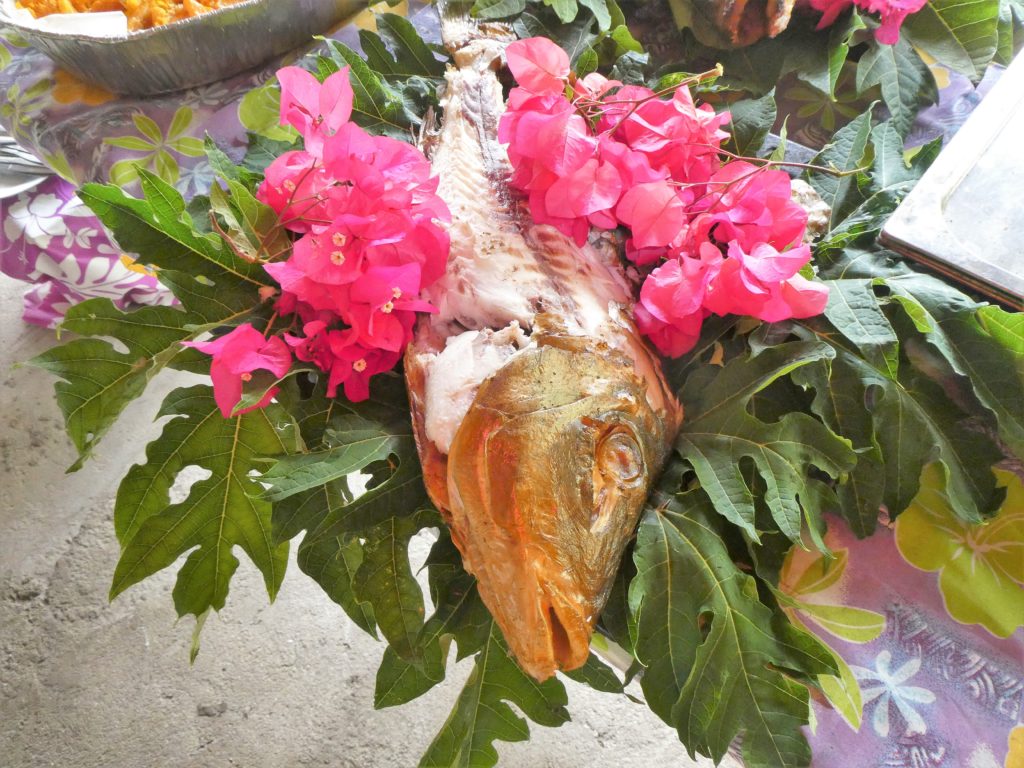

A fun time was had by all and we headed back in our vehicles towards the hotel. We stopped on the way to pick up some provisions at another small grocery store and then back to the dinghies and returned pretty tired back to Morphie for the evening.
Sunday morning we checked the weather and the wind and seas were continuing to flatten so we had a good chance of reaching the main island of Grand Terre if we did an overnight sail. So after a day relaxing and chilling out we picked up our anchor and said a fond farewell to Ouvea.
Bye for now
Jan
